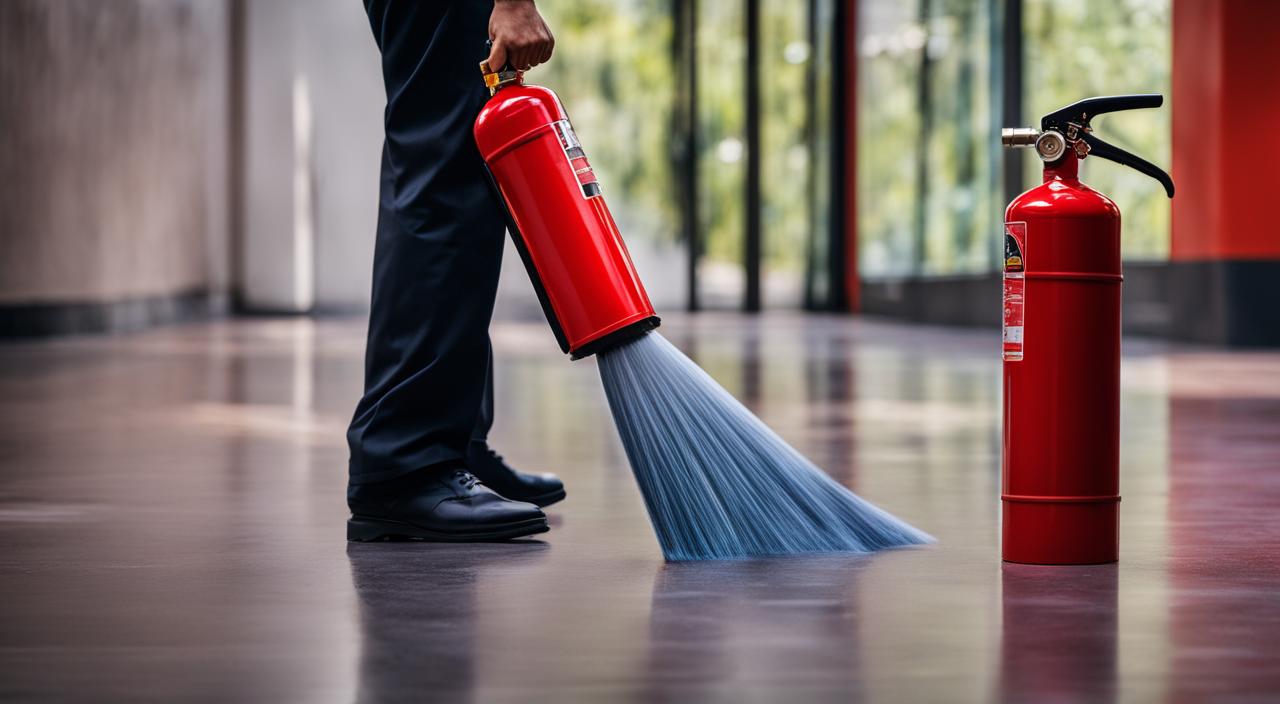
The PASS technique is an essential part of fire safety measures and refers to Pull, Aim, Squeeze, and Sweep. Understanding and following the PASS technique can help individuals react quickly and effectively in fire emergencies.
Fire extinguisher safety is a crucial aspect of fire safety measures. Using fire extinguishers correctly and safely is vital in preventing the spread of fires and minimizing damage.
The PASS technique provides a framework for effectively utilizing a fire extinguisher in emergency situations.
Pulling the pin from the fire extinguisher allows you to use the trigger. Aiming the extinguisher’s hose at the fire is crucial to target the base of the flames. Firmly squeezing the trigger releases the extinguisher’s contents.
Finally, sweeping the hose from side to side over the fire helps to discharge the extinguishing agent and prevent reignition.
It is important to note that the PASS technique is just one aspect of using fire extinguishers safely. It is essential to receive training on different types of extinguishers and their specific techniques, as well as how to assess the situation to determine if it is safe to fight the fire. Evacuation and prioritizing personal safety should always be the top priority in fire emergencies.
How to Properly Use the PASS Technique for Fire Extinguishers
Using a fire extinguisher correctly is crucial in effectively controlling and extinguishing fires. The PASS technique provides a simple yet effective framework to follow when using a fire extinguisher.
By following these steps, you can maximize the chances of successfully extinguishing the fire and minimizing potential damage:
- Pull the pin: Start by pulling the pin located at the top of the fire extinguisher. This pin prevents accidental discharge and must be removed before use. Once the pin is pulled, the extinguisher is ready for activation.
- Aim at the base of the fire: Direct the nozzle or hose of the fire extinguisher towards the base of the flames. This is important as it allows the extinguishing agent to directly reach the source of the fire, effectively cutting off its fuel supply.
- Squeeze the handle: Firmly squeeze the handle or lever of the fire extinguisher to release the extinguishing agent. Maintain a steady grip while doing so to ensure a consistent flow of the extinguishing medium.
- Sweep from side to side: While squeezing the handle, sweep the nozzle or hose of the fire extinguisher from side to side. This sweeping motion helps to disperse the extinguishing agent evenly across the fire, extinguishing the flames effectively.
Remember, it is crucial to aim at the base of the fire, rather than directly at the flames. This is because targeting the base helps to eliminate the fire’s source, whereas aiming at the flames may simply scatter them and lead to their regrowth.
Additionally, always prioritize personal safety when attempting to use a fire extinguisher. Ensure you have a clear escape route, and if the fire becomes uncontrollable or poses a threat to your safety, evacuate immediately and contact emergency services.
Important Considerations for Fire Extinguisher Usage
While utilizing the PASS technique is crucial for effective fire extinguisher usage, there are additional factors that should be taken into account to ensure optimal fire safety. One of the key considerations is the proper maintenance of fire safety equipment, including fire extinguishers.
Regular inspections and servicing of extinguishers are essential to ensure they are in proper working condition. This includes checking the pressure gauge, ensuring the pin is intact, and confirming that the nozzle or hose is not obstructed or damaged.
In addition to maintenance, it is vital to have a well-thought-out evacuation plan in place. Regardless of the fire extinguisher’s efficacy, personal safety should always be the top priority. Familiarize yourself with emergency exit routes, designated meeting points, and evacuation procedures.
Conducting fire drills regularly can help ensure that everyone knows what to do in case of an emergency, minimizing panic and maximizing safety.
Furthermore, it is important to understand the limitations of fire extinguishers. They are designed to handle small, contained fires. If the blaze is spreading rapidly, the fire is too large, or there is excessive smoke, it is best to evacuate immediately and alert the appropriate authorities.
Attempting to fight a fire beyond the capabilities of an extinguisher can put lives at risk.
Remember, proper fire safety extends beyond the usage of fire extinguishers. It includes implementing preventive measures, such as smoke detectors and fire alarms, as well as ensuring the availability of fire blankets and fire-resistant materials in high-risk areas.
By prioritizing regular maintenance, comprehensive evacuation planning, and understanding the limitations of fire extinguishers, individuals can significantly enhance their overall fire safety preparedness.






